One perpetual ambition of call centers is to increase their revenues and profits. One solution is to optimize their call centers, as about 58% of US customers are ready to pay more if they are provided with satisfactory customer service.
Understand the intricacies of call center optimization and learn invaluable strategies to elevate your operations. From maximizing call center efficiency to enhancing customer satisfaction.
Gain a deeper understanding of the essential elements that drive success in call center management. Whether you’re seeking to streamline processes or empower your agents, understand from firsthand expertise.
To maximize your call center's performance, focus on strategic optimization aimed at efficiency and customer satisfaction. Align workforce resources with demand, invest in advanced technology, and establish clear goals and metrics for continuous improvement.
What Is Call Center Optimization?
Call center optimization involves fine-tuning various aspects of call center operations to achieve peak efficiency and customer satisfaction. It involves strategically overseeing resources, processes, and technology to optimize workflows and elevate performance.
This includes optimizing staffing levels, refining call routing systems, implementing effective training programs, and leveraging advanced technology solutions. By focusing on continuous improvement and aligning with organizational goals, call center optimization aims to deliver exceptional service experiences while maximizing productivity and minimizing costs.
Ultimately, it’s about creating a seamless and satisfying customer journey while empowering agents to consistently deliver their best performance.
5 Best Strategies for Call Center Optimization
Here are the 5 best strategies on how to optimize call center performance and improving agent productivity to deliver exceptional customer satisfaction.
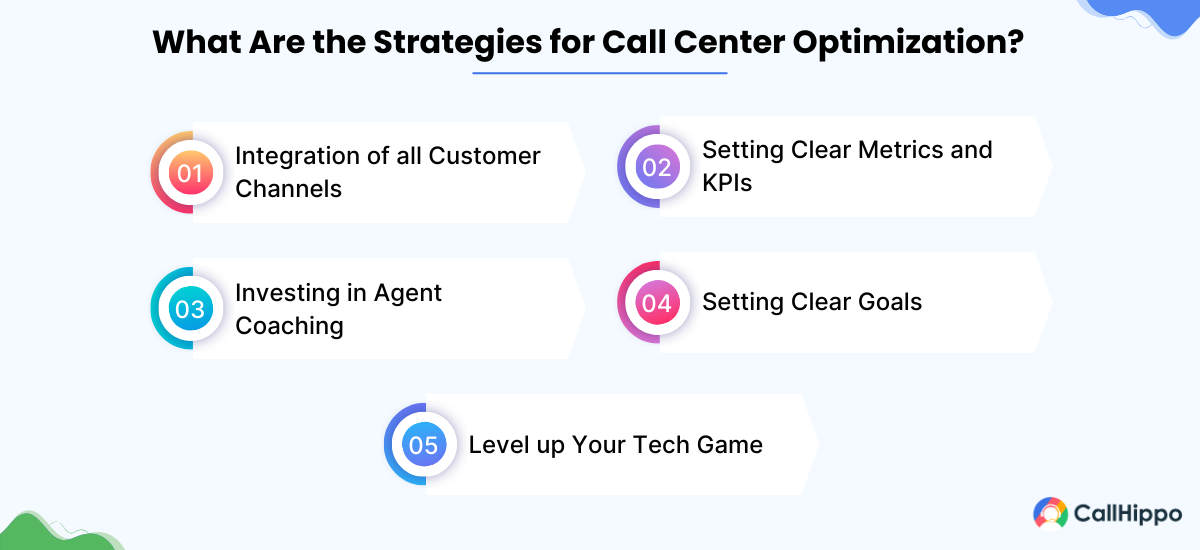
1. Integration of all Customer Channels
The integration of all customer channels is crucial for call center optimization. Agents can seamlessly transition between channels, ensuring consistent and efficient support, by consolidating communication channels such as phone, email, chat, and social media onto a unified platform.
This integration enhances the customer experience by enabling customers to select their preferred communication channel while ensuring cohesive tracking and management of their interactions. It streamlines agents’ workflows ultimately improving agent productivity, reduces response times, and enables better coordination across the organization for more effective issue resolution and customer engagement.
2. Setting Clear Metrics and KPIs for Agent Training
Establishing clear metrics and Key Performance Indicators (KPIs) for agent training is vital for optimizing call center performance. It provides agents with tangible goals like call resolution rates, average handling time, and customer satisfaction scores, guiding their training efforts effectively.
This helps align training efforts with organizational objectives, improves agent performance, and ensures consistency in service delivery. Additionally, regularly tracking and analyzing these metrics allows for ongoing assessment and adjustment of training programs to meet evolving customer needs and business goals.
3. Investing in Agent Coaching
Investing in agent coaching is a pivotal strategy for call center optimization. Through personalized guidance and feedback, coaches can help agents refine their skills, address weaknesses, and enhance their overall performance.
Coaching sessions provide opportunities for agents to learn new techniques, troubleshoot challenges, and improve their confidence in handling customer interactions. By fostering a culture of continuous learning and development, call centers can nurture a high-performing call center team capable of delivering exceptional service and driving customer satisfaction.
4. Setting Clear Goals
Setting clear goals and customer satisfaction score is fundamental for call center optimization. Establishing clear metrics and Key Performance Indicators (KPIs) for agent training is vital for optimizing call center performance.
It provides agents with tangible goals like call resolution rates, average handling time, and customer satisfaction scores, guiding their training efforts effectively. Clear goals align individual and team efforts with organizational priorities, driving motivation and accountability.
5. Level up Your Tech Game
Leveling up your tech game is essential to optimizing call center operations. Invest in advanced technologies like artificial intelligence (AI), chatbots, and speech analytics to automate repetitive tasks, enhance self-service options, and gain insights from customer interactions.
Implementing robust call center software with features such as real-time reporting, workforce management, and omnichannel support can streamline workflows and improve agent efficiency. By leveraging a cutting-edge contact center optimization tool, contact centers can deliver faster, more personalized service, boost agent productivity, and improve customer experience.
What Should You Optimize to Boost Call Center Performance?
The main question for call center managers is what to optimize in a call center to boost their performance and where to start. Below, we have listed elements that you should improve to optimize call center performance. However, optimizing a call center isn’t just about performance—it’s also about maintaining high-quality standards across customer interactions. Implementing a call center quality management system can help ensure consistency in service, improve agent accountability, and enhance customer satisfaction.
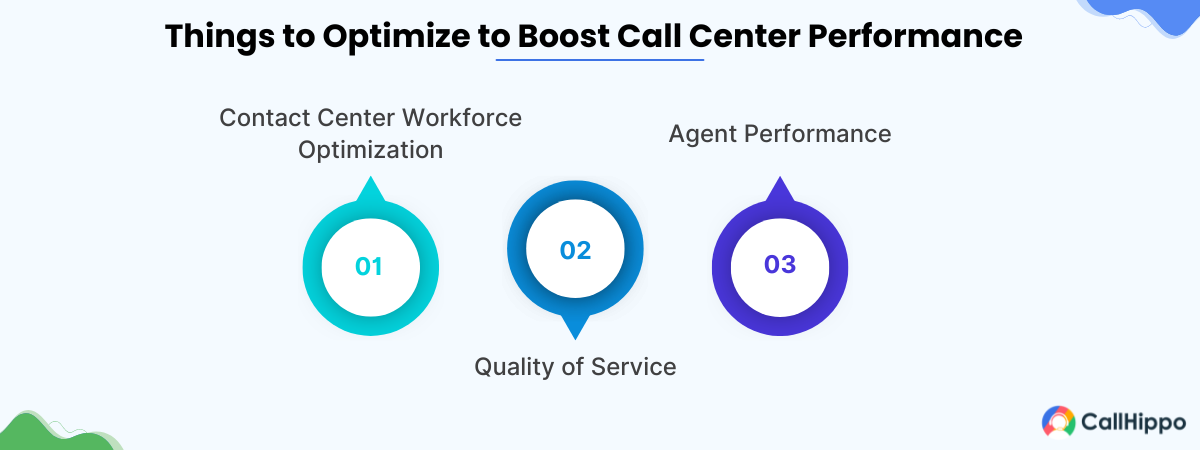
1. Contact Center Workforce Optimization
Contact center workforce optimization involves strategically managing staffing levels, schedules, and skills to match customer demand. Aligning workforce resources with call volume fluctuations ensures efficient handling of inquiries without understaffing or overstaffing.
This optimization process may include forecasting call volumes, scheduling agents accordingly, and implementing flexible staffing solutions to adapt to changing demands while maintaining service quality and efficiency.
2. Quality of Service
Quality of service in a call center refers to the standard of assistance provided to customers during interactions. It encompasses various elements such as courtesy, accuracy, timeliness, and effectiveness in addressing customer needs or inquiries.
Maintaining high-quality service involves training agents to deliver consistent and personalized support, implementing quality assuring monitoring systems, and continuously improving processes to meet or exceed customer expectations.
3. Agent Performance
Agent performance in a call center refers to the effectiveness and efficiency of individual agents in handling customer interactions. It encompasses metrics like call resolution rates, average handling time, customer satisfaction scores, and adherence to scripts or protocols.
Improving agent performance entails providing comprehensive training, constructive feedback, and resources to enhance their skills and productivity, ultimately leading to better service delivery and customer satisfaction.
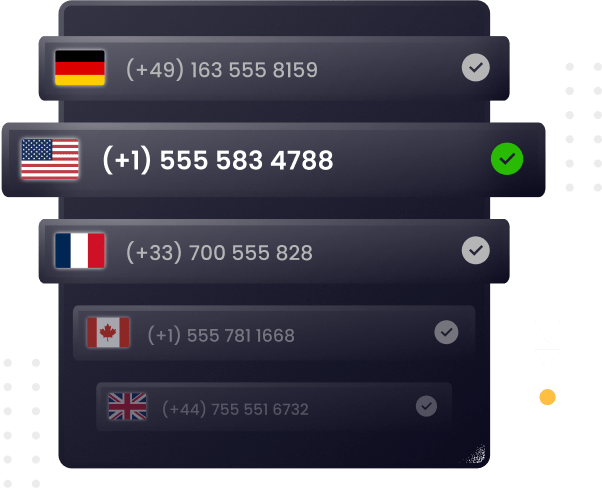
How to Evaluate Your Call Center Performance?
Once the strategies are implemented, it is important to measure the outcome of the operation in a quantifiable manner. Some of the metrics to be measured are as follows.
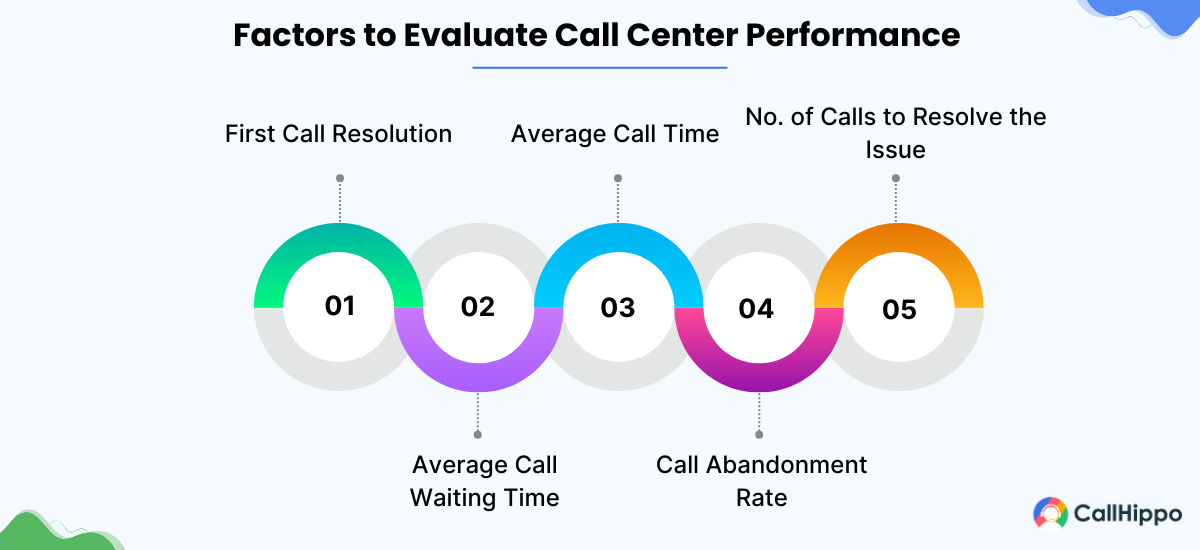
1. First Call Resolution
First call resolution evaluates the proportion of customer concerns addressed successfully in the first interaction. High FCR indicates efficient problem-solving and customer satisfaction, guiding improvements in processes and training for enhanced efficiency and better experiences.
2. Average Call Waiting Time
This metric tracks the time callers spend in the queue before connecting with an agent. Reducing waiting times through staffing optimization and technology ensures prompt service, enhances satisfaction, and meets customer expectations.
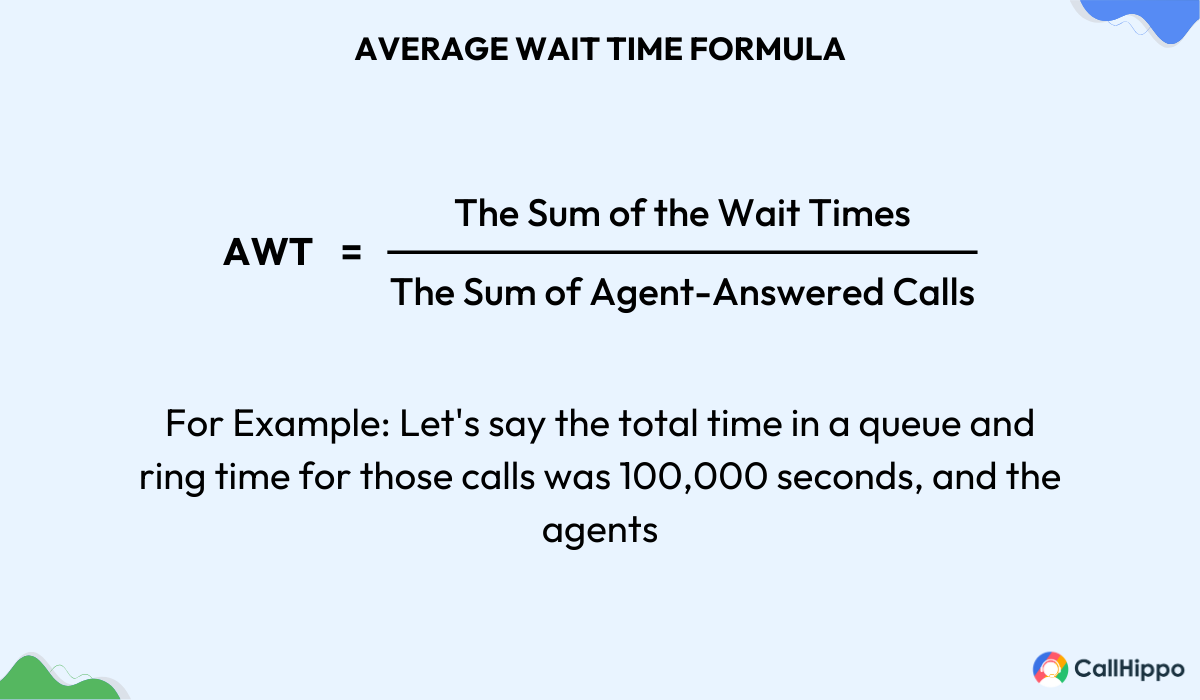
3. Average Call Time
Average call time gauges the duration of customer interactions handled by agents. Balancing efficiency with thoroughness, monitoring this metric guides improvements in agent training and processes to optimize service quality and customer communication.
4. Call Abandonment Rate
This metric reflects the percentage of callers disconnecting before speaking to an agent. High abandonment rates indicate potential service issues, prompting adjustments in staffing, routing, and communication strategies to reduce wait times and enhance satisfaction.
5. No. of Calls to Resolve the Issue
Tracking the number of calls required to resolve issues highlights the effectiveness of problem-solving processes and agent competency. Lower call counts signify efficient resolutions, guiding improvements in training and workflows for enhanced efficiency and customer satisfaction.
Conclusion
In summary, optimizing call center performance is vital for driving revenue growth and ensuring customer satisfaction. By strategically optimizing the workforce, improving service quality, and investing in agent training and technology, call centers can adapt to meet the changing needs of customers effectively.
Monitoring key performance metrics such as first-call resolution and call waiting times enables continuous evaluation and refinement. By prioritizing ongoing improvement and prioritizing customer-centric approaches, call centers can consistently deliver exceptional service experiences and achieve sustainable success.
FAQs
1. How can I improve my contact center service level?
For contact center optimization, focus on optimizing staffing levels, agent training, and technology to meet or exceed service level targets. By adhering to these factors in your day-to-day contact center operations, you’ll significantly improve your contact center service levels
2. What are the 4 elements of a contact center?
The four elements typically include people, processes, technology, and performance measurement.
3. What is an 80/20 service level?
The 80/20 service level refers to the goal of answering 80% of calls by call center agents within 20 seconds.
4. What does AHT mean in a call center?
AHT stands for Average Handle Time, representing the average duration of interactions between agents and customers.

Subscribe to our newsletter & never miss our latest news and promotions.









